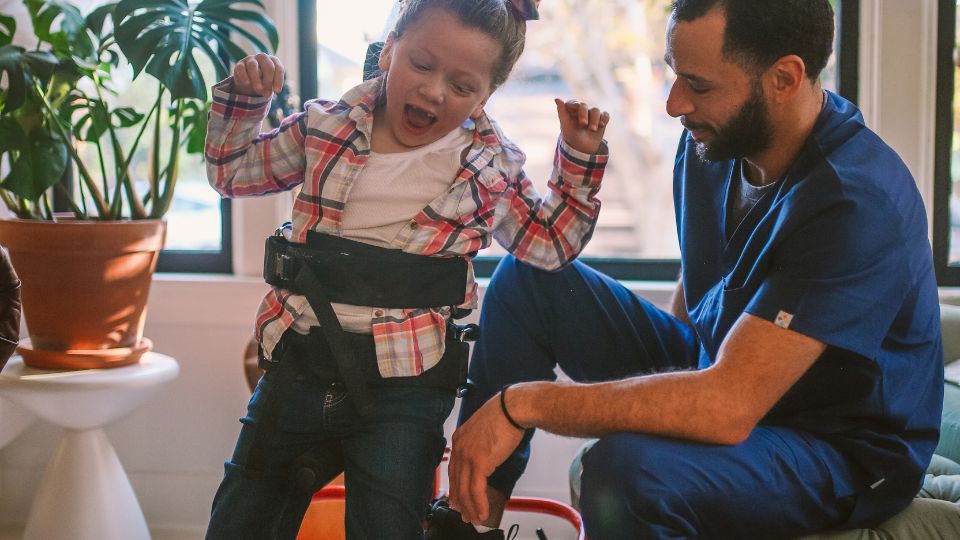In the journey towards independence and mobility for children with physical challenges, the right equipment can make all the difference. Pediatric mobility aids play a crucial role in empowering children to explore their world, interact with peers, and participate fully in daily activities. From walkers to wheelchairs, each aid is designed to cater to specific needs, ensuring safety, comfort, and functionality. Here’s a comprehensive guide to understanding and selecting the most suitable mobility aid for your child:
Understanding the Needs:

Every child’s mobility needs are unique. Some may require aids for short-term recovery from injuries, while others may need long-term solutions due to congenital conditions or disabilities. Consulting with healthcare professionals such as pediatricians, physical therapists, and mobility specialists is essential to assess the specific requirements and capabilities of your child.
Medical Condition and Diagnosis:
Begin by understanding the specific medical condition or diagnosis affecting your child’s mobility. Whether it’s a congenital disability, a neurological disorder, a musculoskeletal condition, or the result of an injury, the type and severity of the condition will guide the selection of appropriate mobility aids.
Functional Abilities:
Assess your child’s current functional abilities. Consider how much support they need with tasks like standing, walking, or navigating their environment. This assessment helps determine whether your child requires minimal assistance for stability or comprehensive support for movement.
Developmental Stage:
Take into account your child’s developmental stage. Infants and toddlers may benefit from aids that encourage early mobility and exploration, such as gait trainers or adaptive strollers. Older children may require aids that support independence in activities of daily living, such as wheelchairs or walkers.
Long-term vs. Short-term Needs:
Determine whether the mobility aid is needed for short-term recovery, rehabilitation, or long-term daily use. Short-term needs might involve aids for recovery from surgery or injury, while long-term needs may require durable solutions that accommodate growth and changing mobility needs over time.
Environmental Considerations:
Consider the environments in which your child will use the mobility aid most frequently. Factors such as home layout, school accessibility, and outdoor terrain impact the choice of aid. Some aids are designed for indoor use, while others offer versatility for both indoor and outdoor environments.
Comfort and Safety:
Prioritize aids that provide comfort and safety. Features such as padded seats, adjustable supports, and ergonomic designs enhance comfort, while sturdy construction and stability mechanisms ensure safety during use.
Feedback from Healthcare Professionals:
Consult with healthcare professionals, including pediatricians, physical therapists, and mobility specialists. They can offer insights based on their expertise and assessments, recommending aids that best meet your child’s physical needs and lifestyle.
Understanding these aspects will guide you in making informed decisions when selecting a pediatric mobility aid, ensuring it aligns with your child’s unique needs and supports their journey towards independence and improved quality of life.
Types of Pediatric Mobility Aids:

Walkers and Gait Trainers:
These aids provide support for children who need assistance with balance and stability while walking. Walkers come in various designs, including front-wheeled and four-wheeled options, to accommodate different levels of mobility.
Wheelchairs:
Wheelchairs offer mobility for children who cannot walk or have limited mobility. Manual wheelchairs are propelled by the child or a caregiver, while powered wheelchairs use electric motors for movement, providing more independence.
Crutches and Canes:
Suitable for children who require assistance with weight-bearing or balance, crutches and canes help improve stability during walking.
Standing Frames:
These aids support children in maintaining an upright position, promoting weight-bearing and bone health while enabling interaction with peers at eye level.
Adaptive Bikes and Trikes:
Designed for outdoor mobility and recreation, adaptive bikes and trikes accommodate children with physical disabilities, providing a fun way to engage in physical activities.
Factors to Consider When Choosing a Mobility Aid:
Safety: Prioritize aids that ensure stability and minimize risks of falls or injuries.
Comfort: Aids should be comfortable to use for extended periods, with adjustable features to accommodate growth.
Accessibility: Consider the ease of maneuverability both indoors and outdoors, ensuring the aid fits through doorways and around furniture.
Durability: Quality materials and construction are essential for longevity, especially for active children.
Customization: Many aids can be customized to meet specific needs regarding height, weight capacity, and additional support features.
Integration into Daily Life:
Encourage your child’s independence by integrating the mobility aid into daily routines and activities. Practice using the aid together, and provide positive reinforcement to build confidence.
Support and Resources:
Seek support from healthcare professionals and organizations specializing in pediatric mobility aids. They can provide guidance on maintenance, adjustments, and resources for funding or insurance coverage.
Conclusion:
Pediatric mobility aids are transformative tools that empower children with physical challenges to explore, learn, and grow. By understanding your child’s unique needs and selecting the appropriate aid, you are taking a significant step towards enhancing their mobility and overall quality of life. Embrace the journey towards freedom with confidence, knowing that the right aid can open doors to new opportunities and experiences for your child.
Whether it’s a walker for support during initial steps or a wheelchair for daily mobility, each aid represents a step towards independence and inclusivity. Together, let’s pave the way for every child to navigate their world with dignity and joy. Contact us today at Physio Home, located in Ras Al Khaimah, United Arab Emirates, to discover how we can support your child’s mobility needs.

